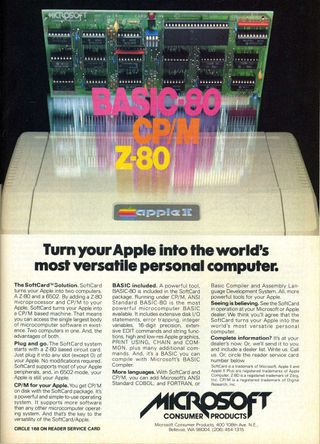30th birthday: TG Daily pays tribute to Apple
Cupertino (CA) - Almost too appropriately, on 1 April, Apple Computer will celebrate its 30th anniversary as a brand. Throughout this week and the next, TG Daily will pay tribute to the people, the ingenuity, the ideas, the magnificent successes, the spectacular failures, and the era of our lives that Apple entered into in 1976, and which literally shaped the future of our world.
At this time, three decades ago, a Hewlett-Packard employee and a guy he met one day at a meeting of the Homebrew Computer Club of Palo Alto, were cooking up a recipe for a self-contained PC board with 4K of RAM, interface connections, and a built-in Motorola 6502 CPU. Take a look at the nearest clock, and wind it back exactly thirty years to the moment. At this very time, Steve Wozniak was getting his prototypes to accept a so-called "monitor program" - the early microcomputer operating system - that would enable him to type in his BASIC interpreter, not in assembly language but in raw 6502 object code. Unlike with the other kit computers of the day, Wozniak was seeing the results on a video screen.
The Apple I, which Woz was building that day, did not change history. Quite conceivably, any number of other engineers could have been working on similar projects, in similar garages, that we've never heard about and may never come to know. But a wild set of circumstances and coincidences led Woz and his business partner, the incredible Steve Jobs, to revise and extend their miniaturized Rube Goldberg contraption into one of the single most revolutionary devices ever conceived in human history.

This photograph from a 1979 Apple II sales brochure indicates that not even the advertising agencies of the day really knew what "computing" was supposed to look like. Note the one hand on the keyboard, that the user isn't looking at the screen, and most importantly, that his ledger is still kept on paper.
Perhaps Thomas Edison conceived most of the the principles and designs of the devices that changed the landscape of our world. But if that landscape is indeed forged by technology, then the making of the Apple II is akin to the building of the Hoover Dam. The computers we build today, especially those we construct from parts like motherboards and expansion cards, are based on principles devised by Steven Wozniak and proven with the Apple II. It did not set forth the computer revolution - that was coming anyway. But the shape and scope of that revolution were maximized by the Apple II. In terms of historical significance, the Macintosh itself is nowhere near as important, just as the Ford Mustang cannot equal the significance of the Model T. There were any number of directions the microcomputer revolution could have taken just after the American Bicentennial. The Apple II set the course, and everything that happened thereafter - the IBM PC, the "Era of Compatibility," the licensing of operating systems as separate products, the standardization of expansion busses, and of course, the little thing to the right of your keyboard - followed thereafter. Had there not been an Apple II, or an Apple Computer, what you are doing right this moment would be nowhere near the same act, and might very well have only been feasible a decade from now, or even later.
With the exception of that brief period beginning in 1974, when the first computer kit developers presented the Altair 8800 and IMSAI computers for sale in Popular Electronics, most of the milestones in the computer industry have been established by Apple.

Perhaps no other advertisement of this era more succinctly represents the powerful differences of the world of computing in 1981, than this one from the June issue of Creative Computing, then America's leading computer publication. Here, just another producer of expansion boards for Apple was pitching a card that contains its own self-contained Z-80 processor. Indeed, this was a self-contained computer as an attachment for a self-contained computer. And yes, that's the same Microsoft. But notice something else: The operating system which this attached computer would run was CP/M, the very system which Microsoft itself would defeat in the race to build the operating system for the IBM PC.
Stay on the Cutting Edge
Join the experts who read Tom's Hardware for the inside track on enthusiast PC tech news — and have for over 25 years. We'll send breaking news and in-depth reviews of CPUs, GPUs, AI, maker hardware and more straight to your inbox.
It was a vastly different world, as this advertisement starkly represents. The players in the computing field were entirely different - the big names were all afraid to enter, but even more afraid that they would be the last to enter. The world anticipated the arrival of IBM into the computing field, but it anticipated even more the arrival of names like Xerox, DEC, and perhaps RCA, which were believed to be capable of dwarfing poor IBM. Apple was largely perceived by big business as a temporary player, as a placeholder for the next real corporation to come in and take over. And Microsoft...could be located under "M" in the advertiser's index, a little manufacturer of expansion cards and BASIC interpreters, that curiously relocated from New Mexico to a suburb of Washington state.
Over the next week, TG Daily will pay tribute not just to Apple and the way its successes, and even failures, have shaped the way we work and live, but to the time and place in which our computing industry was launched. If you never knew how it truly felt to be alive and well in the dawn of the computer era, stay with us throughout this week, for a peek at the future from the vantage point of the past.
Most Popular


